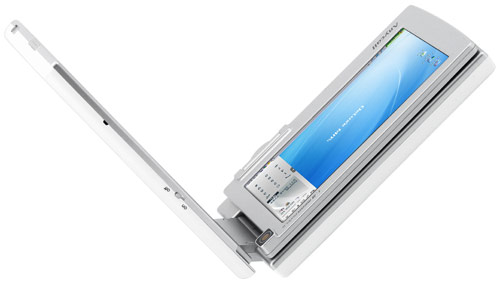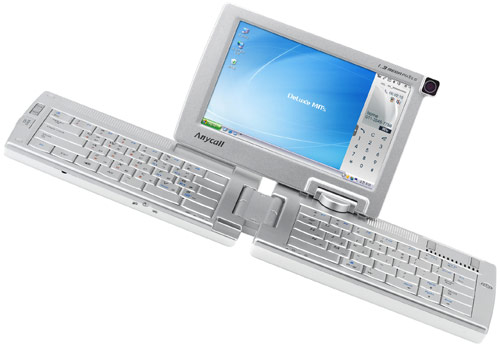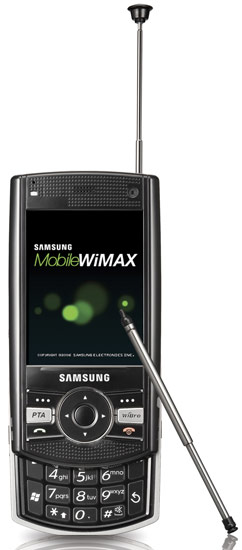As alluring as it may be, LTE faces important commercial challenges. It's still not clear whether the technology can meet its targets for network performance on time and at the right price, experts say. And by the time LTE becomes available in 2009-10 it is likely to be surpassed by the latest terrestrial technologies.
What's more, early versions of mobile WiMAX are already a commercial reality. Some industry players, such as Korea's Samsung, argue that WiMAX is so good LTE may never be necessary. Mobile WiMAX potentially can move data at a speed of 70 megabits per second across 40 miles, though the average speed is probably closer to 30 megabits. WiMAX also promises to be cheaper to implement than conventional 3G mobile technology because it uses newer, more efficient technology. More important, because it's based on Internet protocols, WiMAX lets carriers offer a single data service, similar to wireless DSL, that can carry any kind of traffic, from voice calls to Web surfing to video. That's a significant advantage over the separate voice and data services now provided by mobile operators.
And it fits right into the strategies of IP gearmakers such as Cisco, which sealed its entry into the WiMAX arena earlier this month when it announced a proposed $330 million acquisition of Navini Networks, a WiMAX equipment maker and holder of key WiMAX patents. Cisco had said in 2004 it wouldn't be a WiMAX player. The about-face is seen as a testament to the technology's growing importance.
Gaining Traction Around the Globe
WiMAX earned another significant victory earlier this month when the International Telecommunication Union's radio assembly, an arm of the U.N., agreed to include it as part of what is called the third-generation family of mobile standards. The endorsement opens the way for many of the ITU's member countries to devote a part of the public radio spectrum to WiMAX, helping to connect the receivers that are starting to be embedded in laptop computers, phones, music players, and other portable devices.
Intel, the world's largest computer chipmaker, is planning to integrate the technology into laptops by 2008. Samsung already has unveiled several new WiMAX devices, and Nokia and Motorola (MOT) have said they expect to start selling mobile devices using WiMAX technology in 2008.
WiMAX is also taking hold in parts of the developing world. The technology is being adopted rapidly by operators in high-growth markets such as Brazil, China, India, and Russia. Indeed, some 410 operators around the world have deployed WiMAX services, according to TeleGeography, a Washington (D.C.) consultancy. About 75 of those offer mobile WiMAX; the balance offer fixed WiMAX.
Clearwire (CLWR), a high-profile venture started in 2003 by wireless pioneer Craig McCaw, has teamed with Sprint to share the risk of providing WiMAX in the U.S. It also has launched services in Europe and hinted at plans to expand into Asia and Latin America.
A Race That's Far From Over
As popular as it's becoming, WiMAX isn't a slam dunk. Sweden's Ericsson, the world's No. 1 telecom-equipment maker, has said that unlike most other manufacturers, it will not make WiMAX gear. Ericsson argues that WiMAX is not optimized for voice calls on the move. That's not the technology's only challenge. WiMAX will have to compete with ever-improving fixed broadband technologies. And those who back it will have to figure out how to achieve profitability in developing markets.
What's more, the flavor of mobile WiMAX being introduced now is not a true 4G service, but rather something halfway between 3G and 4G, says Tanner of Analysys. The 4G version of WiMAX won't hit the market for another few years, about the same time as LTE. And within the industry a debate is raging over which of the three competing 4G standards is the fastest, most efficient, and most cost-effective.
Still, with Intel seeding WiMAX startups around the world and embedding WiMAX chips in its laptops, phone operators that have sunk billions of dollars into 3G licenses clearly are concerned that WiMAX could have a major impact. At a trade fair earlier this year Vodafone CEO Arun Sarin called on the industry as a whole to step up the pace of development for LTE, to combat a faster-than-anticipated take-up of WiMAX. "LTE is still at the standards stage, while WiMAX is commercial reality," Sarin said in February.
If Verizon Wireless throws its considerable weight behind LTE, Sarin might get his wish.






 Previous research at WSIL showed the benefits of pattern diversity over space diversity. While the latter is viable only when sufficient real estate is available, pattern diversity can be utilized even in the case where space is limited – like in cellular phones or handsets. Research carried out in WSIL established that circular patch array (CPA) yields significant capacity gains over the conventional uniform linear array with the advantage of reducing the physical size of the array significantly. It was shown that collocated CPAs produce orthogonal radiation patterns, which gives excellent pattern diversity. The work also involved optimizing overall systems performance, using CEM and EM software tools, to maximize antenna theory and communication theoretic metrics for given size constraints. The output of the optimization problem was used to tune antenna array parameters (i.e., size, antenna material, feed points).
Previous research at WSIL showed the benefits of pattern diversity over space diversity. While the latter is viable only when sufficient real estate is available, pattern diversity can be utilized even in the case where space is limited – like in cellular phones or handsets. Research carried out in WSIL established that circular patch array (CPA) yields significant capacity gains over the conventional uniform linear array with the advantage of reducing the physical size of the array significantly. It was shown that collocated CPAs produce orthogonal radiation patterns, which gives excellent pattern diversity. The work also involved optimizing overall systems performance, using CEM and EM software tools, to maximize antenna theory and communication theoretic metrics for given size constraints. The output of the optimization problem was used to tune antenna array parameters (i.e., size, antenna material, feed points). 




